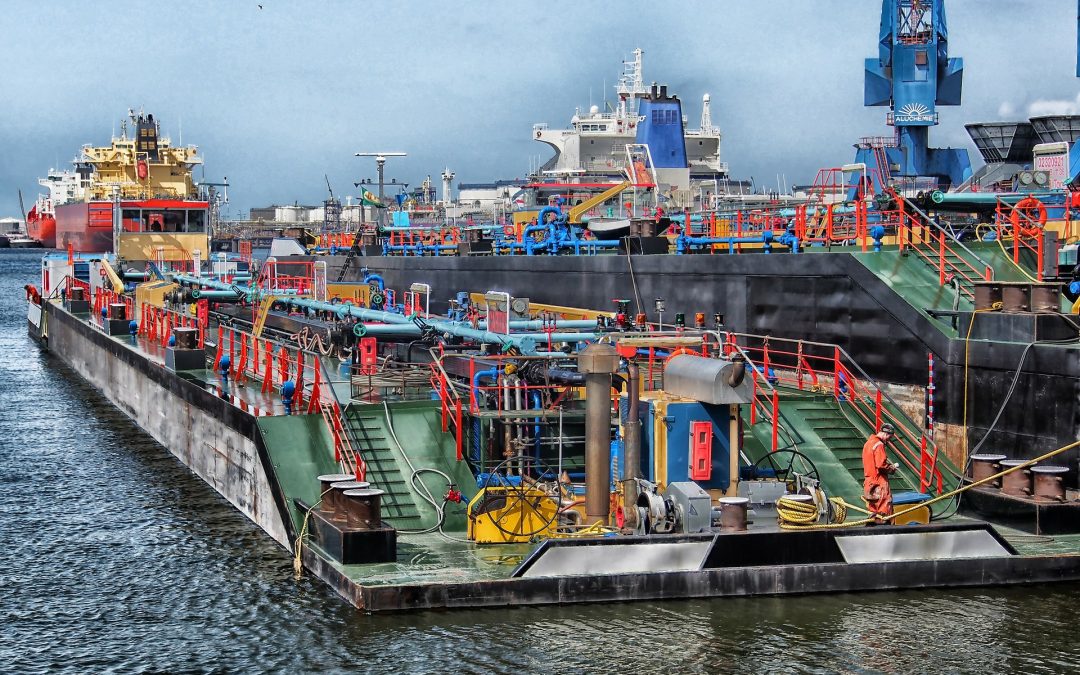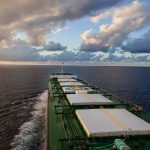Shipping is responsible for 3% of global greenhouse gas emissions, far less than road transport. But its emissions are notoriously hard to abate and growing fast. Left unchecked, shipping emissions could grow to 130% of 2008 levels by 2050, according to the International Maritime Organization (IMO).
With 90% of worldwide goods being transported by sea, the value of shipping to global economies is huge, and as companies look to reduce their Scope 3 emissions, those in their value chain, the pressure is on for the sector to clean up or ship out.
But what strategies is it taking to do this? And can it overcome the innovation versus investment problem that seems to haunt the green transition movement?
One key strategy being deployed by the maritime industry to quell emissions is the development of green shipping corridors. Defined by the Global Maritime Forum as “maritime routes between major port hubs where zero-emission solutions are supported and demonstrated”, more than 20 of these routes are now at various stages of development. This far exceeds the target to establish six green corridors by 2025, as set out by the Clydebank Declaration, launched at COP26 in November 2021.
Ingrid Irigoyen, associate director, of ocean and climate, for the energy and environment program at the U.S.-based Aspen Institute, explains why the corridors are important.
“(Shipping) is such a diverse and massive global industry that we’re trying to transition wholesale to new sources of energy and new methods of propulsion. That is a huge undertaking for society. And even the smartest people in the world, who’ve been in this space for a long time, find it challenging to develop global strategies that we can all move towards simultaneously.”
She points out that vessels carry everything from iron ore to iPhones. With different contracting arrangements and relationships among cargo owners and shipping companies, not to mention misaligned political motivations and varying access to renewable energy, the seascape is anything but level.
“Green corridors offer an opportunity for value-chain actors who are working in a specific geography to take this massive global challenge and shrink it down,” says Irigoyen. “They offer a testing ground for the technical and operational steps forward that they can help build confidence for a bigger (set) of actors who are watching those initiatives.”
One route currently being developed is from Los Angeles to Shanghai. The port of Shanghai is the world’s busiest by container tonnage. The port of LA, meanwhile, is the busiest in the western hemisphere and, together with the Port of Long Beach, handles 40% of the U.S.’s containerized imports. “This is a very impactful area to look at reducing emissions because of the sheer volume of consumer-facing goods that arrive here,” says Alisa Kreynes, deputy director of ports and shipping for C40 Cities, a key convenor of the LA-Shanghai route.
In 2021, the then-mayor of LA and chair of C40 Cities, Eric Garcetti, launched the C40 Ports Forum, which aims to connect port cities and ports around the world to tackle air pollution and GHGs. “One of the things that he really wanted to do was work with China to make sure that the west coast ports, Los Angeles specifically, are doing something meaningful with China. Because that’s where we can get the most impact in terms of emissions reductions,” says Kreynes.
The fact that the initial push for the green corridor came from the cities and ports themselves (the ports of both LA and Shanghai are run by their municipalities), means that the development process has been more clear-cut.
“We work at the city-to-city level,” says Kreynes, “which makes things a lot more efficient than working at the state or national level. So, in the case of the U.S. and China, we were able to overcome some of the geopolitical tensions and complexities that were certainly not in our favor at that time.”
The LA-Shanghai green corridor also stands apart in that it’s a “gate-to-gate” route, meaning emissions along the maritime route aren’t the only ones being mitigated: greenhouse gases (GHGs) and pollutants that arise at the port level are included as well, both at departure and arrival. “Most green corridors look at just the ship itself,” says Kreynes. “(But) ports are major sources of air pollutants.” These include nitrogen oxides, sulfur oxides, and fine particulate matter.
Indeed, a 2019 study found that in 2015 air pollution from shipping was the third-highest cause of transport-related deaths from pollution worldwide, causing 60,000 premature deaths, or 15% of the total.
Kreynes points out that there are a lot of other craft handling cargo in ports besides cargo ships, and they are typically run on diesel, a major source of emissions. “So, being able to include those in a corridor is really important,” she adds.
The LA-Shanghai route is the only green corridor in development that includes all key stakeholder types – shipping companies, cargo owners, regulators, port authorities, and fuel producers – and an implementation plan will be released in the coming months. Getting to such a stage takes some doing, with “only a handful (having) advanced far enough to begin feasibility assessments or implementation planning,” according to the Global Maritime Forum’s Annual Progress Report on Green Shipping Corridors.
One key stumbling block is the development and deployment of zero-emission fuels, including the ability of vessels to use these fuels, as well as the capacity of ports to bunker them, says Jesse Fahnestock, project director, of decarbonization, at the Global Maritime Forum.
But the movement is happening as the industry coalesces around two primary fuel options for deep-sea shipping: methanol and ammonia, which both require hydrogen to produce.
“Very large investments into green and in some cases blue hydrogen production, have begun to produce some confidence that there’s going to be the capacity to make these fuels,” says Fahnestock. He adds that there is still plenty of uncertainty around whether there will be enough clean hydrogen at the volumes needed and at a good price since there will be high demand from other sectors as well.
“But I see progress being made and growing confidence that, from the producer side, there will be large volumes in line with what would be needed to get shipping on a proper decarbonization pathway.”
Another mechanism that some believe would be helpful is a global CO2 tax. Johan Byskov Svendsen, program manager at the Copenhagen-based Maersk Mc-Kinney Moller Center for Zero Carbon Shipping, says that policy support channeled through, for example, the Inflation Reduction Act in the U.S. or the EU in Europe, can only go so far. If projects are too reliant on subsidies and those funds dry up, the projects themselves might similarly wither away.
Svendsen says the tax would need to be high, and applied globally. “If we know what CO2 taxation will be on the maritime industry in say 2028, 2030, and all the way to 2040 … that would allow those first-moving countries and companies to say ‘okay … we will pay a bit more in the early days because we know that it will be costly with our fossil-based fuel as soon as the CO2 taxation is implemented’.”
As a start, under newly proposed provisions to bring shipping within the EU’s emissions trading scheme (ETS), ships traveling within the EU will be required to pay for 40% of their emissions from 2025, rising to 100% by 2027. Some experts argue, however, that this measure won’t lead to a drastic reduction in global shipping emissions. Analysis by the Brussels-based campaign group Transport & Environment found that more than 25 million tonnes of CO2 will be exempt.
Action could also be spurred through a high-level target from the IMO. Countries, businesses, and institutions across the world agree that in order to keep global warming to no more than 1.5 degrees Celsius – as specified in the Paris Agreement – emissions need to reach net zero by 2050. And yet the IMO is still targeting only a 50% reduction in global shipping emissions by 2050.
“The importance of a zero 2050 target from the IMO cannot be underestimated,” says Svendsen. He sees this, alongside CO2 taxation, as the two key enabling factors for decarbonizing the maritime industry by the middle of the century.
Bottom-up action is hugely important too though, argues Kreynes, which is why convening organizations such as C40 Cities have such a strong role to play. “Green shipping corridors are a very important decarbonization tool because they allow us to bring these collaborative structures together – create these ecosystems where shipping companies, cargo owners, ports, governments, fuel producers, can all work together to create environments where new technologies and approaches can be risk shared across the group.”
Source: Hellenic Shipping News





